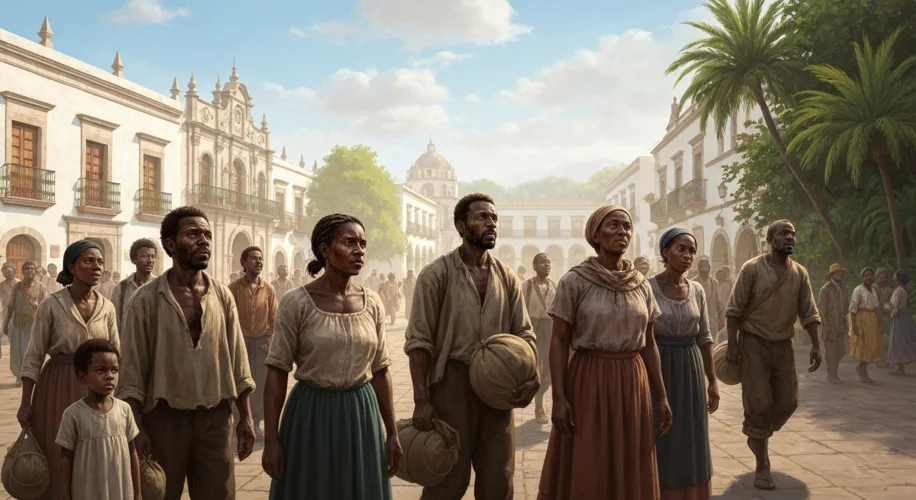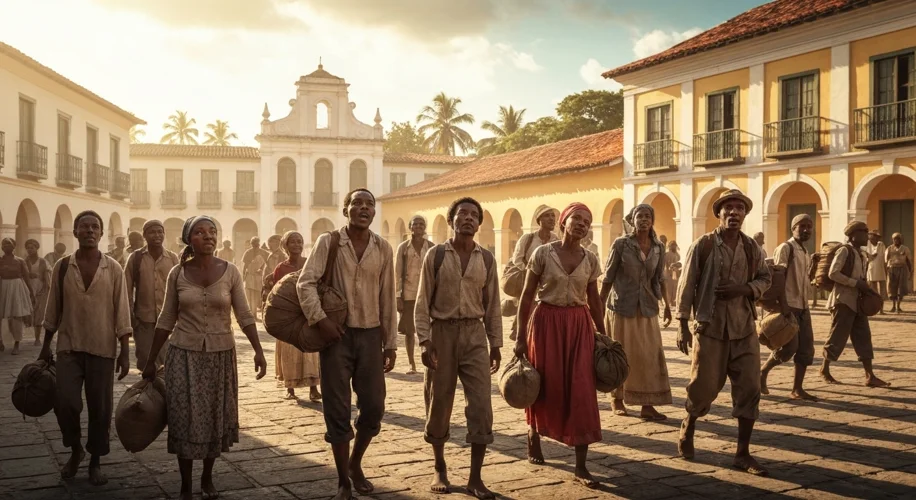The year is 1850. The air in the American South hangs thick with the scent of cotton and the unspoken terror of bondage. For those enslaved, the promise of freedom was a fragile, distant star, often obscured by the harsh realities of plantation life. Yet, for a courageous few, this star guided them south, across treacherous landscapes and perilous borders, towards a nation that offered a different destiny: Mexico.
Mexico, having abolished slavery in 1829, stood as a beacon of hope in a hemisphere where this abhorrent practice still held sway. This wasn’t a land of abstract liberty; it was a tangible sanctuary for those fleeing the brutal chains of American slavery. The journey itself was an odyssey of immense courage. Families were torn apart, lives risked, all for the chance of a new beginning. Many followed the North Star, guided by abolitionists and the Underground Railroad, but their ultimate destination for true freedom and potential integration was often the vibrant land south of the Rio Grande.
Imagine the quiet desperation of a young woman, perhaps named Eliza, leaving behind the only home she had ever known, a place etched with both forced labor and the nascent seeds of resistance. Her escape might have been under the cloak of a moonless night, the rustle of leaves her only companion, her heart pounding with a mixture of fear and exhilarating anticipation. She might have traveled by foot, by boat, or even disguised herself to evade patrols, each step a testament to an unyielding spirit.

Upon reaching Mexico, these individuals found themselves in a society vastly different from the one they left. While Mexico was a Catholic nation with its own complex social hierarchy, the legal status of slavery was nonexistent. This meant they were not property, but individuals with the potential to own land, engage in trade, and build lives free from the constant threat of the auction block. Many settled in northern Mexico, drawn by the relative proximity to the United States and the existing communities of formerly enslaved people who had made the journey before them.
Communities began to form, woven from shared experiences of suffering and the collective pursuit of dignity. These new settlements were more than just places to live; they were centers of resilience and cultural exchange. Freedmen and women, now known as ‘freedpeople’ or ‘Libertos,’ worked as farmers, laborers, artisans, and even small business owners. They brought with them skills honed under duress – agricultural knowledge, craftsmanship, and an intimate understanding of survival. Some even found themselves in roles that were unimaginable in their former lives, such as owning property or participating in local governance.
However, life in Mexico was not without its challenges. Cultural differences, language barriers, and occasional prejudice meant that the path to full integration was often arduous. Furthermore, the proximity to the United States meant that the specter of recapture, though legally impossible within Mexico, could still cast a long shadow. American slaveholders, furious at the loss of their ‘property,’ sometimes attempted to reclaim individuals who had escaped into Mexican territory, leading to tense diplomatic situations and the need for vigilance among the freed populations.
Despite these hurdles, the narratives of those who escaped to Mexico are powerful testaments to the human desire for freedom. They represent a crucial, often overlooked, chapter in the broader story of abolition and the enduring legacy of resilience. Their journey south was not merely an escape from chains, but a courageous step towards self-determination, forging new lives and contributing to the rich tapestry of Mexican society. The echoes of their courage resonate, reminding us that freedom is a pursuit worth any risk.
These stories highlight a crucial aspect of the 19th-century struggle against slavery, demonstrating that the path to liberation was not confined to the borders of the United States. Mexico, through its bold legislative action, provided a vital haven, allowing hundreds, if not thousands, of individuals to reclaim their humanity and build futures on their own terms. Their experiences underscore the profound impact of legal and social structures on individual lives and the enduring power of hope in the face of unimaginable adversity.

